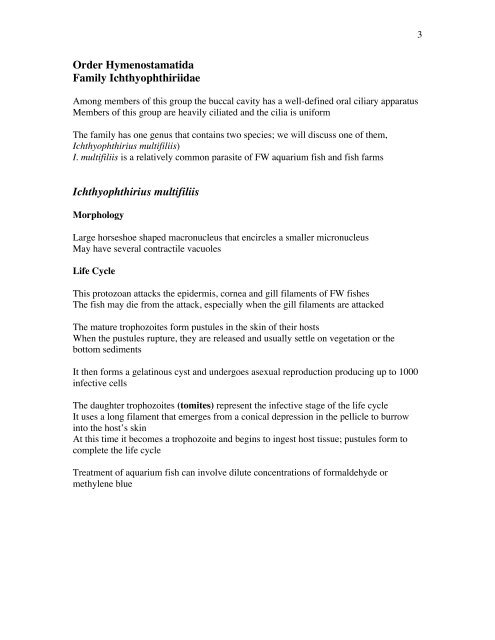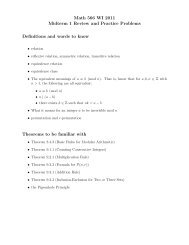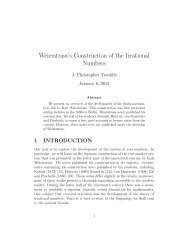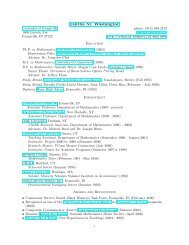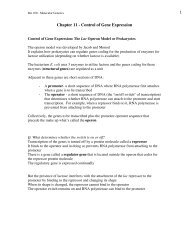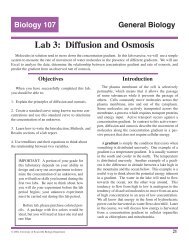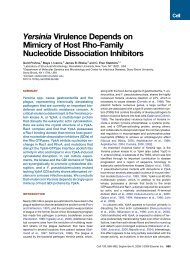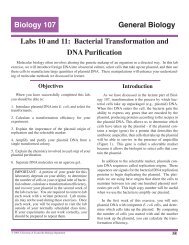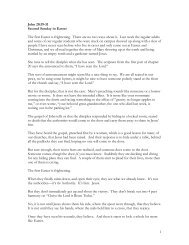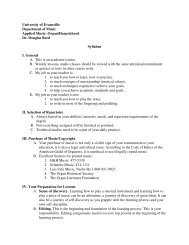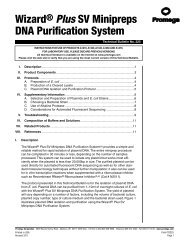Chapter 10 - Phylum Ciliophora Phylum Ciliophora Order ...
Chapter 10 - Phylum Ciliophora Phylum Ciliophora Order ...
Chapter 10 - Phylum Ciliophora Phylum Ciliophora Order ...
- No tags were found...
Create successful ePaper yourself
Turn your PDF publications into a flip-book with our unique Google optimized e-Paper software.
3<strong>Order</strong> HymenostamatidaFamily IchthyophthiriidaeAmong members of this group the buccal cavity has a well-defined oral ciliary apparatusMembers of this group are heavily ciliated and the cilia is uniformThe family has one genus that contains two species; we will discuss one of them,Ichthyophthirius multifiliis)I. multifiliis is a relatively common parasite of FW aquarium fish and fish farmsIchthyophthirius multifiliisMorphologyLarge horseshoe shaped macronucleus that encircles a smaller micronucleusMay have several contractile vacuolesLife CycleThis protozoan attacks the epidermis, cornea and gill filaments of FW fishesThe fish may die from the attack, especially when the gill filaments are attackedThe mature trophozoites form pustules in the skin of their hostsWhen the pustules rupture, they are released and usually settle on vegetation or thebottom sedimentsIt then forms a gelatinous cyst and undergoes asexual reproduction producing up to <strong>10</strong>00infective cellsThe daughter trophozoites (tomites) represent the infective stage of the life cycleIt uses a long filament that emerges from a conical depression in the pellicle to burrowinto the host’s skinAt this time it becomes a trophozoite and begins to ingest host tissue; pustules form tocomplete the life cycleTreatment of aquarium fish can involve dilute concentrations of formaldehyde ormethylene blue


